Eastern Ukraine
For a moment, the sound of shelling is drowned out by a thumping beat coming from a camouflaged van. ‘Separatysty [Separatists]!’ says the rousing chorus: ‘The day of your death is here!’ We are with a Ukrainian nationalist militia in a village outside Donetsk airport, which is in the hands of pro-Russian rebels, usually referred to by the Ukrainians as terorysty or bandyty. But despite their bravado, the war is not going well for the Ukrainian side. There have been a series of disastrous setbacks, towns and territory lost, whole units put to panicky flight.
The shattered village, Piesky, reminds me of Chechnya or Bosnia, the houses’ red roofs caved in, shell craters in the soft earth, rubble everywhere. A man, Ivan Burmistrov, and his young son are out looking for water. The day before a shell destroyed his outside toilet, he tells me. When I ask him which side he supports, he points first to the rebel positions in the distance, then to the government forces nearby. ‘They are my relatives there, and they are my relatives here too. Should I point the gun at the face of my brother? I won’t do it. The whole country has gone crazy.’
In the cellar of a destroyed house, the nationalist militiamen are full of bitter, paranoid accusations about their leadership. The generals and politicians have made a secret pact with the enemy to betray Ukraine, insists the officer, Ivan Motkovsky. ‘Let me repeat, the secret agreement exists,’ he says, seeing a sceptical expression on my face. ‘The same mistakes are repeated over and over again. They never learn from any defeat. No one can be this incompetent.’
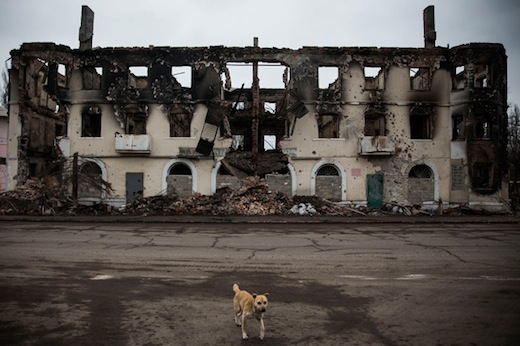
Commander Motkovsky is 28 and was an athletics coach whose only previous military experience was a spell in his university cadet force. He has wild, darting eyes after six months on the frontline. Yes, the high command are useless, says another fighter, Vasiliy Tesluk, a grey-bearded collective-farm manager who is old enough to have been part of the Soviet campaign in Afghanistan. But he has another explanation for their problems, pointing out, correctly, that the government is simply outgunned by the rebels. ‘Look at this weapon,’ he says, holding up an ancient Kalashnikov. ‘There are bullets from 1943!’
As if to confirm his argument, there is a distant crash and a rumble shakes the ground. We count ten further impacts, one after the other: rebel heavy artillery, perhaps a multiple-launch rocket system. We are visiting Piesky in the middle of what is supposed to be a ceasefire. The internationally brokered peace deal — the Minsk agreement — is two weeks old. Elsewhere in eastern Ukraine, the truce has had some effect, with both sides pulling back heavy weapons here and there. But the fighting around the airport has never really stopped.
It is only a matter of time before the ceasefire breaks down everywhere, says another of the militiamen, Lieutenant Volodimir Volkovich. ‘A political solution isn’t possible,’ he says. ‘This war didn’t start today. Russia has always tried to eliminate us. Look at history: millions were killed by the famine [engineered by Stalin in the 1930s]. Now, the next step of their operation, to capture our land, has begun.’
The militiamen are all from the Ukrainian-speaking west of the country, fighting in the Russian-speaking east. We leave their positions and drive a few miles to a checkpoint that marks the beginning of the ‘Donetsk People’s Republic’, the enclave being carved out by the rebels. ‘No Russians here,’ says the soldier at the checkpoint, unprompted, telling us he is a local man and that it is all lies by the international media that the separatists include troops sent by Moscow.
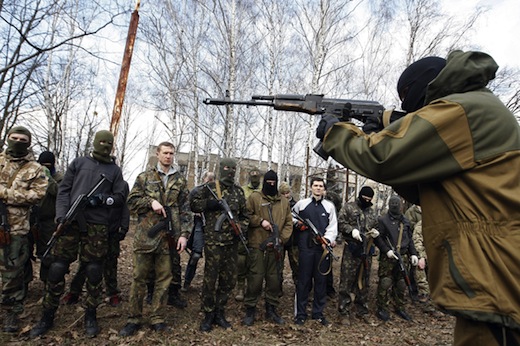
We drive on to the town of Dabeltseve, recently captured by the rebels, passing a column of tanks on the way. It is a more impressive display of firepower than anything we have seen on the government side. We are greeted by a Cossack commander, Aleksey Bogdanov, who has a freshly pressed uniform, a tall Astrakhan hat and a brand-new-looking Glock pistol on his belt. (The gun is what a British soldier would call ‘Gucci gear’.)
Commander Bogdanov shows me the system of Ukrainian trenches and bunkers his men helped to capture. The occupants fled so hastily that they left their boots behind. The difference between his troops and the government’s is one of morale, he explains. ‘If they wanted to fight they would not have given up these positions,’ he says. ‘We are fighting for our land and they don’t need it.’
He used to live in Moscow but is originally from Dontesk. Not for the first time in this conflict, the second world war is invoked. The other side shouts ‘Sieg Heil’, he says, ‘They proclaim traitors such as Bandera and Shukhevych as heroes [Stephan Bandera and Roman Shukhevych, who were allied with Nazi Germany]. I lost more than one grandfather in that war. They died on their feet so we would not have to live on our knees.’
He says that — rather improbably — the nationalists have chest tattoos saying ‘Slave Holder’. How could any man stand for that? He points to a government-held village on a hill a few miles off: that is where his troops will go on the offensive next. Then he remembers there is supposed to be a truce, adding hastily: ‘Once those hooligans break the ceasefire. We stick to agreements — they don’t.’
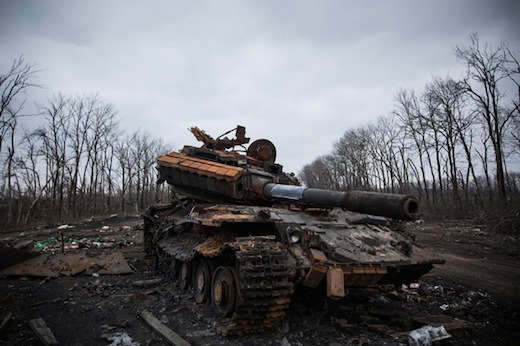
If the pro-Russian rebels go on the offensive again, and if there is another big defeat for the Ukrainians, the United States could step into this conflict, arming the government. That prospect is greeted with horror in the Russian-speaking areas that form the Donetsk People’s Republic. The Ukrainian side has artillery, too, and there is abundant evidence they use it indiscriminately.
In the village of Alexandrovka, locals show us the remains of cluster bombs, fired they say by government troops. Vera Kovalenko weeps as she shows me mortar damage to her house. ‘We are all Ukrainians; we have Ukrainian passports; we live in Ukraine. So why do they kill our children? We spent the whole summer in the cellars.’ She goes on: ‘We used to live side by side here, just as in the Soviet Union. For us, everyone is equal. We would expect this kind of thing from the Germans — but not from our people.’
The villagers tell me that opinion in Alexandrovka used to be evenly split between support for Moscow and for Kiev. Now 90 per cent are for Moscow and the rebels. ‘We know who is shelling us — and it’s not the rebels,’ says Mrs Kovalenko. ‘The rebels will liberate us.’
With each new round of fighting, opinion on both sides hardens. Seen from the ground, government and rebels are treating the ceasefire not as an end to hostilities but as a chance to rearm and regroup. Both sides in Ukraine are preparing for war.
Got something to add? Join the discussion and comment below.
Get 10 issues for just $10
Subscribe to The Spectator Australia today for the next 10 magazine issues, plus full online access, for just $10.
Paul Wood is a BBC foreign correspondent
You might disagree with half of it, but you’ll enjoy reading all of it. Try your first month for free, then just $2 a week for the remainder of your first year.

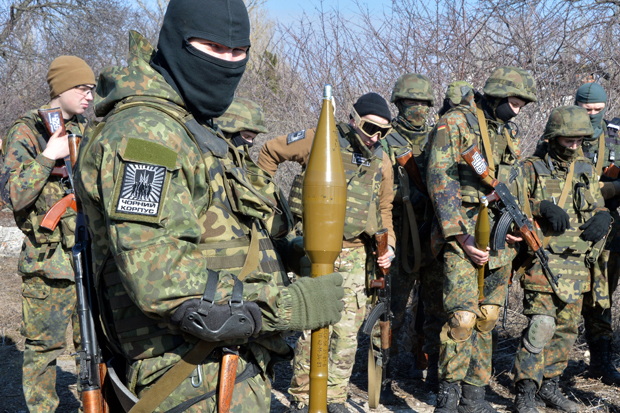

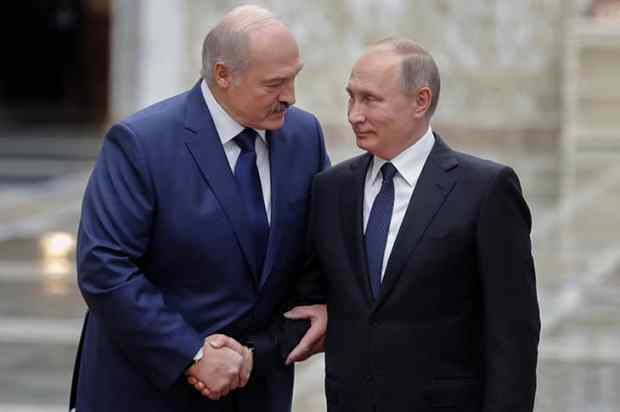
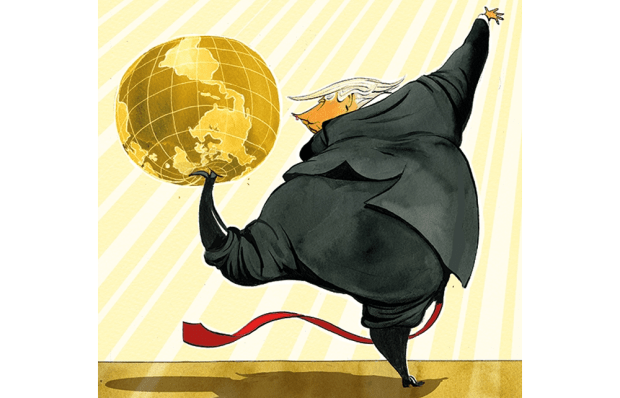









Comments
Don't miss out
Join the conversation with other Spectator Australia readers. Subscribe to leave a comment.
SUBSCRIBEAlready a subscriber? Log in